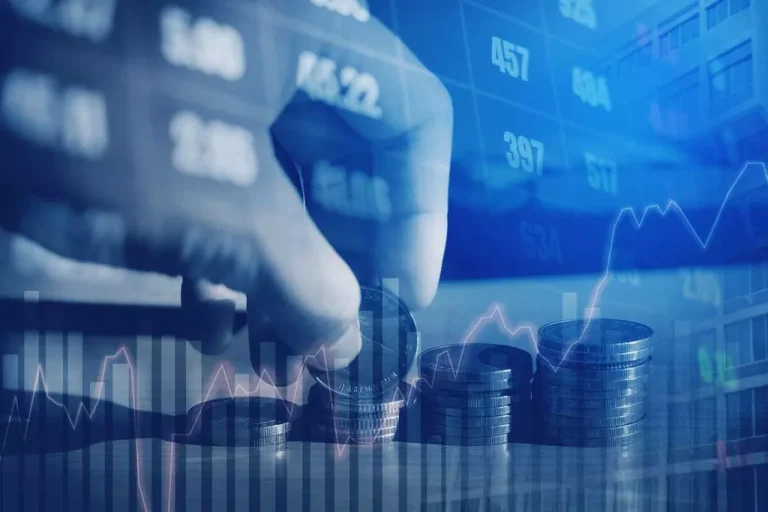Content
As said above, a trading strategy is a predefined set of rules determining when and how to enter or exit trades. The algorithms have the ability to “follow” the price more efficiently than a manual click for a trade execution. This is even more noticeable on lower trading timeframes, with charts on a minute bar, for example. You and I are not computerized hares, moving more like the inexorable tortoise of Aesop’s classic fable. And there is nothing wrong with that since a more methodical approach suits human investors better. Warren Buffett made spot algo trading his billions without leaning on digital high-speed trades.
Bookmap Review: The Best Software and Broker Integration for Trading in 2025
Mean reversion is a mathematical methodology sometimes used for stock investing, but it can be applied to other processes. In general terms the Stablecoin idea is that both a stock’s high and low prices are temporary, and that a stock’s price tends to have an average price over time. An example of a mean-reverting process is the Ornstein-Uhlenbeck stochastic equation.

Top 10 personal finance lessons for self-learning

These self-executing contracts automatically enforce trade conditions, reducing the need for intermediaries and speeding up transaction times. Additionally, blockchain’s ability to provide real-time settlement of trades enhances liquidity and minimizes counterparty risks. As the technology matures, its integration with algorithmic trading systems is expected to expand, offering more secure and efficient trading solutions. The growing prevalence of algorithmic trading has attracted significant attention from regulators worldwide. This scrutiny stems from concerns about the potential for market manipulation, unfair advantages over manual traders, and the risk https://www.xcritical.com/ of algorithms amplifying systemic shocks. Regulatory compliance adds another layer of complexity, as traders and firms must navigate evolving rules and requirements.
Reasons for Algo Trading’s Growing Popularity
It is essential for algorithmic traders to have robust backup systems and disaster recovery plans to minimize the impact of system failures. We, as traders, also need to monitor our trading algorithms to ensure they perform as expected in every situation and be timely in addressing potential machine issues due to the million factors we have no control over. All in all, algo trading is certainly a viable way to profit from financial markets as long as you do the required study and follow best practices when developing your algos. While this is a simple example, the power of algorithmic trading lies in its speed, scalability, and uptime. You could use the strategy across thousands of stock tickers, run it while you sleep, or trade smaller time frames (think 1 minute) where speed is paramount.

The trade opens and closes instantly as soon as the algo identifies an ideal match. As a result, traders have to complete the deals as soon as they are notified of a match. Once the necessary data has been collected, traders build and test trading models. Moving averages are simply smoothed averages of an asset’s price over a specific time period. Many traders employ this type of strategy with two moving averages — one being a short-term average and one being a longer-term average.
For algorithms to work as coded instructions, one needs to have complete knowledge of programming knowledge. The human brains with programming skills are the best source of developing such coded instructions for algo trading with if-else and other clauses. Explore Intrinio’s algorithmic trading tools and data today to take your trading strategy to the next level. Whether you’re an individual trader or an institution, our platform offers the data and resources to help you succeed in the fast-paced world of algorithmic trading.
The real edge (advantage) here is to increase your trading efficiency and take advantage of entering and exiting trades when the opportunity manifests itself. The goal is to be more efficient in our trading activities and profit from market inefficiencies within a fraction of a second if you consider models like HFT (High-Frequency Trading). Something that only big institutional organisations with deep pockets have the luxury to benefit from.
High-frequency trading (HFT), a subset of algorithmic trading, is particularly known for exacerbating market volatility. Algorithms executing large volumes of trades in milliseconds can lead to rapid price swings, particularly in markets with low liquidity. In extreme cases, these rapid fluctuations have caused flash crashes, where markets experience sudden and severe drops in value within minutes.
By simultaneously trading in different assets, traders can spread the risk and reduce exposure to any single trade or market. Over time, these systems have grown increasingly sophisticated, utilizing artificial intelligence (AI) techniques like machine learning and deep learning. Some even use large language models (LLMs) similar to OpenAI’s ChatGPT, analyzing financial news and social media chatter to make trading decisions. Taking advantage of a more detailed set of real-world variables can make the algorithm more effective, at least in theory. In fact, one of the most profitable hedge funds of the last decade runs algo strategies based on mathematical models.
- As there is no human intervention, the possibilities of errors are quite less, given the coded instructions are right.
- She is a Today Show and Publisher’s Weekly-featured author who has written or ghostwritten 10+ books on a wide variety of topics, ranging from day trading to unicorns to plant care.
- This approach removes emotions from trading, which often causes rash choices.
- A special class of these algorithms attempts to detect algorithmic or iceberg orders on the other side (i.e. if you are trying to buy, the algorithm will try to detect orders for the sell side).
- The trader can subsequently place trades based on the artificial change in price, then canceling the limit orders before they are executed.
Investors widely use algo trading in scalping as it involves rapid purchasing and selling of assets to earn quick profits out of small increments at the prices. As a result, traders can participate in multiple trades throughout the day and reap profits with the quick execution of the trades. Algorithmic trading refers to automated trading wherein investors and traders enter and exit trades as and when the criteria match as per the computerized instructions.
Algorithms are used in market-making strategies that narrow the bid-ask spread, therefore benefitting both the trader and overall market. To use it, the first step is to gain an understanding of common algorithmic strategies, such as trend-following, mean reversion, high-frequency trading and arbitrage (more on these later). Yes, risks include technological failures, over-optimization, and increased market volatility due to high-frequency trading. This blog will explain algorithmic trading, popular strategies, its growing popularity, and its impact on the future of trading. Actual algorithmic trading on the surface is easy—you implement a strategy and the computer does all the hard work.
The codes help analyze market trends depending on the price, support, resistance, volume, and other factors influencing investment decisions. As the algorithms work on technology and formula, it is more likely for the automated systems to identify accurate trends. Trend-following algorithms attempt to capitalize on the momentum of stock prices by entering trades in the direction of the current market trend. These strategies rely on technical indicators like moving averages and momentum oscillators to identify trends. With trading and also with algorithmic trading, one of the major risks that traders face is market volatility and liquidity. This refers to the rapid and unpredictable changes in market prices and the ability to execute trades quickly and, more importantly, at desired prices.
Perhaps the biggest benefit to algorithm trading is that it takes out the human element. The percentage of the global equities volume run by algorithmic trading, as of 2019. An algorithm is a set of instructions for solving a problem or accomplishing a task. One common example of an algorithm is a recipe, which consists of specific instructions for preparing a dish or meal.
